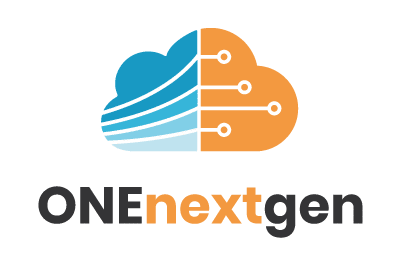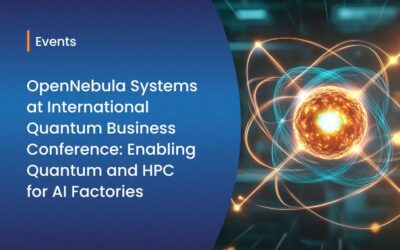As AI use cases continue to expand across sectors—from real-time analytics to generative models—Europe’s telco operators are racing to deploy intelligent infrastructure closer to the user. In a recent panel hosted by OpenNebula Systems, representatives from the European Commission and leading European telecom providers explored the urgency and complexity of bringing AI inference capabilities to the 5G edge.
This discussion, part of the IPCEI‑CIS initiative—the EU’s largest open source infrastructure project to date—shed light on the challenges and opportunities ahead as operators work to combine virtual RAN (vRAN) and AI processing into shared, sovereign edge environments.
Why the Telco Edge Can’t Wait?
The panel opened with a central question: why is it critical to accelerate AI inference at the edge? For Orange, the answer begins with security and resilience. As they pointed out, deploying AI at the edge means data remains closer to where it is generated—minimizing latency and enhancing infrastructure robustness. From a telco perspective, that proximity is key to delivering real-time services without sacrificing privacy or control.
KPN emphasized the strategic implications for Europe. According to their representative, there’s still no unified approach to edge within the telecom industry, but the need for action is urgent. Deploying AI inference capabilities at the edge is about more than performance—it’s about sovereignty, competitiveness, and building digital systems that don’t break under pressure. Europe must move quickly to ensure that its data stays within its borders and that telcos can offer an alternative to hyperscaler dominance.
From the European Commission’s point of view, the urgency is matched by a growing policy focus. They acknowledged that AI at the edge hasn’t happened at scale yet, but noted that the foundational pieces are now in place. The Commission sees edge AI as a priority area, and public-private collaboration will be crucial to bringing telecom operators into the AI fold.
From Deutsche Telekom’s consulting arm, Detecon, it was added that part of the delay in adoption stems from the complexity of edge infrastructure. Compared to centralized clouds, edge environments pose logistical and architectural challenges—but the demand is real. Many early adopters, such as large automotive manufacturers, are already running inference workloads on-premises. According to market forecasts cited, by 2030 around 70% of all workloads are expected to be accelerated, with the majority of AI workloads focused on inference. That growing demand, as noted, is a clear signal for telcos to act.
Tiscali’s representative offered a concrete example with the Villanova project—a federated platform designed to enable generative AI and data services across cloud and edge environments. Built using composable AI engines and open European technologies, Villanova prioritizes privacy, energy efficiency, and real-time responsiveness. For them, it’s a model for how telcos can meet the AI challenge while staying aligned with European values.
Enabling Technologies: Hardware, Software, and Sovereignty
As the conversation moved toward solutions, the panel explored what enabling technologies are required to scale AI inference at the edge. Once again, hardware came to the forefront. They noted that existing AI models are often too large for edge deployment, which creates the need for compression, quantization, and more efficient model design. Europe should consider developing its own specialized chipsets for AI—both to meet performance needs and to ensure digital sovereignty.
From the European Commission side, the choice of edge AI hardware is highly use-case dependent. Energy constraints, integration requirements, and workload characteristics all play a role. What matters most is creating systems flexible enough to adapt to different needs—while also minimizing dependence on non-European providers. Sovereignty remains a core objective for the European Commission.
From Orange’s point of view, the challenge is not just about processing power but also energy efficiency. They stressed that lightweight solutions will be critical—both to reduce consumption and to enable wide-scale deployment. This means having easy access to a network of distributed edge nodes capable of running inference tasks reliably and securely.
Tiscali echoed the importance of bringing intelligence to the edge, where data is actually generated. Processing closer to the source not only enhances performance but also aligns with key goals around privacy and sustainability.
On the other hand, Detecon pointed out that the ecosystem must be ready not just for telcos but also for developers. The success of edge AI will depend on whether application builders have access to standardized, interoperable tools.
From Vision to Execution: Use Cases and Industry Readiness
In the second half of the panel, the discussion shifted toward execution: how to translate this vision into practical deployment. The panelists shared early use cases already being tested across verticals, from industrial robotics and automotive manufacturing to real-time monitoring in logistics. These pilots demonstrate that edge AI can deliver tangible business value through faster decision-making and reduced infrastructure overhead.
Business models are also beginning to evolve. Telcos are exploring offerings like edge-as-a-service, allowing enterprises to deploy inference workloads on demand across a network of nodes. Multi-tenancy is a key feature—AI inference and 5G vRAN must be able to share resources efficiently without degrading service quality.
The panel also addressed the broader vendor landscape. With global chip manufacturers moving quickly to capture the edge AI market, Europe must remain both open and strategic. Developing domestic hardware solutions while integrating with global standards will be essential to avoid dependency and preserve autonomy. Public-private collaboration through initiatives like IPCEI‑CIS is seen as a powerful way to achieve this.
Open source frameworks and federated architectures emerged as recurring themes. Projects like Villanova and OpenNebula’s edge orchestration platform show that it’s possible to build scalable, sovereign solutions without reinventing the wheel. The key is collaboration—across telcos, technology providers, and policymakers.
Toward a Smarter, Sovereign Edge
By the end of the session, a shared vision had emerged: Europe’s future in AI will be defined at the edge. Combining 5G and AI inference in a sovereign, distributed infrastructure is no longer a moonshot—it’s a strategic necessity. From real-time use cases to chip design and open platforms, the building blocks are coming together. What’s needed now is scale, speed, and alignment.
If telcos can seize this moment—collaborating across borders, adopting open technologies, and building developer-friendly ecosystems—Europe is well positioned to lead the next generation of intelligent, resilient digital infrastructure.
If you’d like to learn more about how OpenNebula is supporting telcos in building sovereign AI-ready edge infrastructure, click here.





0 Comments